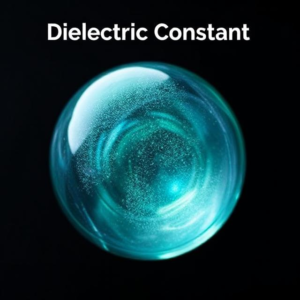1. What is Polarization?
In a general sense, polarization refers to the direction in which waves oscillate. Most commonly, it is used to describe the orientation of electromagnetic waves (like light or radio waves). However, in electronics, polarization can refer to how certain materials (like capacitors or semiconductors) react to electric fields and how their behavior changes when they are exposed to those fields.
In electronics, polarization usually involves the alignment of electrical charges or the behavior of materials when an electric field is applied. It can happen in different contexts, such as in capacitors, transistors, or electromagnetic waves.

2. Types of Polarization in Electronics
There are a few different ways polarization shows up in electronics. Let’s go over some key examples:
A. Dielectric Polarization in Capacitors
Capacitors are electronic components that store and release electrical energy. In a capacitor, the dielectric material (the insulating material between the two plates) can become polarized when an electric field is applied.
- How it works: The electric field causes the electrons and nuclei in the dielectric material to shift slightly in opposite directions. This creates a tiny separation of charges, which stores energy in the capacitor.
- Effect: The ability of the dielectric to become polarized influences the capacitance of the capacitor (how much charge it can store). Materials with high dielectric constant (like ceramics or certain plastics) allow more polarization and thus can store more charge.
B. Polarization in Semiconductors (PN Junctions)
In semiconductor devices like diodes and transistors, polarization plays a crucial role in how the components work. In particular, PN junctions (the boundary between P-type and N-type semiconductors) are essential in devices like diodes and transistors.
- How it works: When the P-type and N-type materials are put together, electrons from the N-type region move to the P-type region, and holes (places where electrons are missing) from the P-type region move to the N-type region. This movement creates a depletion region that prevents further flow of current unless the junction is “forward-biased.”
- Effect: The polarization of the junction determines how the diode or transistor behaves. When forward bias is applied (positive voltage to the P-side and negative to the N-side), the junction becomes polarized in such a way that current can flow through it. In reverse bias, the polarization prevents current from flowing.
C. Electrostatic Polarization in Insulators
When an electric field is applied to an insulator, the material becomes polarized. This means that the positive and negative charges inside the insulator are slightly displaced, creating an internal electric field that opposes the applied field.
- How it works: In materials like rubber, plastic, or glass, the individual atoms or molecules have a tiny positive and negative charge. When an external electric field is applied, these charges move slightly, creating a dipole (a positive and negative charge separated by a small distance).
- Effect: This polarization can affect how the material reacts to electrical fields. It can reduce the overall effect of the external electric field inside the material. In practical terms, this is why insulating materials are important in electronics, as they help keep electrical currents contained in the proper parts of a circuit.
D. Polarization of Light Waves (in Optics and Communication Systems)
In optical systems and communications (like radio, TV, and Wi-Fi), polarization of light waves is an important concept. Polarization in this case refers to the direction in which the electric field of a light wave oscillates.
- How it works: Electromagnetic waves, such as light, travel in the form of oscillating electric and magnetic fields. When these waves are polarized, the electric field oscillates in one direction, such as up and down or left and right.
- Effect: Polarization can be used to filter or control the direction of light or radio signals in communication systems. For example, polarized lenses in sunglasses block certain orientations of light, reducing glare. In antennas for radio or TV signals, the polarization of the antennas must match the polarization of the signal for the best reception.
3. Effects of Polarization on Electronics
Now, let’s focus on how polarization affects the performance and behavior of electronic components and systems.
A. Impact on Capacitor Performance
- Capacitance: The dielectric constant of the material inside a capacitor (which determines how easily the material can become polarized) directly affects the capacitance. A higher dielectric constant means the capacitor can store more charge for the same voltage.
- Temperature Stability: The ability of a material to maintain its polarization as temperature changes can impact the performance of the capacitor. If the dielectric material loses its polarization at higher temperatures, the capacitor’s performance may degrade.
B. Influence on Semiconductor Devices
- Forward and Reverse Biasing: In diodes and transistors, polarization determines whether current can flow through the device. When a diode is forward-biased (positive voltage on the P-side), the polarization is such that electrons flow from the N-side to the P-side. In reverse bias, the polarization prevents current from flowing, acting as a one-way valve.
- Switching and Amplification: In transistors, polarization affects the ability of the device to switch between on and off states or to amplify signals. For instance, in a bipolar junction transistor (BJT), controlling the polarization of the base-emitter junction allows the transistor to switch between conducting and non-conducting states.
C. Effect on Signal Transmission (in Communication Systems)
- Signal Polarization: When transmitting signals (like radio waves, TV signals, or Wi-Fi), the polarization of the transmitting and receiving antennas must match. If they don’t align, the signal strength can be significantly reduced.
- Signal Interference: Polarization can be used to avoid interference between different signals. For example, in satellite communication, antennas are often polarized in different directions to separate signals traveling on the same frequency.
D. Polarization Loss in Materials
- Some materials used in electronic components can experience polarization loss. This occurs when the material cannot fully polarize in response to the electric field, which can reduce the effectiveness of components like capacitors or insulators.
- For example, in high-frequency circuits, the dielectric material in a capacitor may have polarization lag, where it takes time for the charges to rearrange in response to changing electric fields, leading to inefficiency and energy loss.
4. In Summary:
- Polarization in electronics refers to the alignment of charges within a material in response to an electric field.
- In capacitors, polarization of the dielectric material affects the storage capacity (capacitance) and performance.
- In semiconductors, polarization at the PN junction determines how current flows, affecting devices like diodes and transistors.
- In optical and communication systems, the polarization of light waves and radio signals plays a role in transmission efficiency and signal quality.
- Polarization can impact the performance of electronic components, affecting everything from power storage in capacitors to the switching behavior of transistors and the efficiency of signal transmission.
So, polarization plays a critical role in the behavior and performance of many electronic devices, influencing everything from energy storage in capacitors to communication quality in radio waves.











